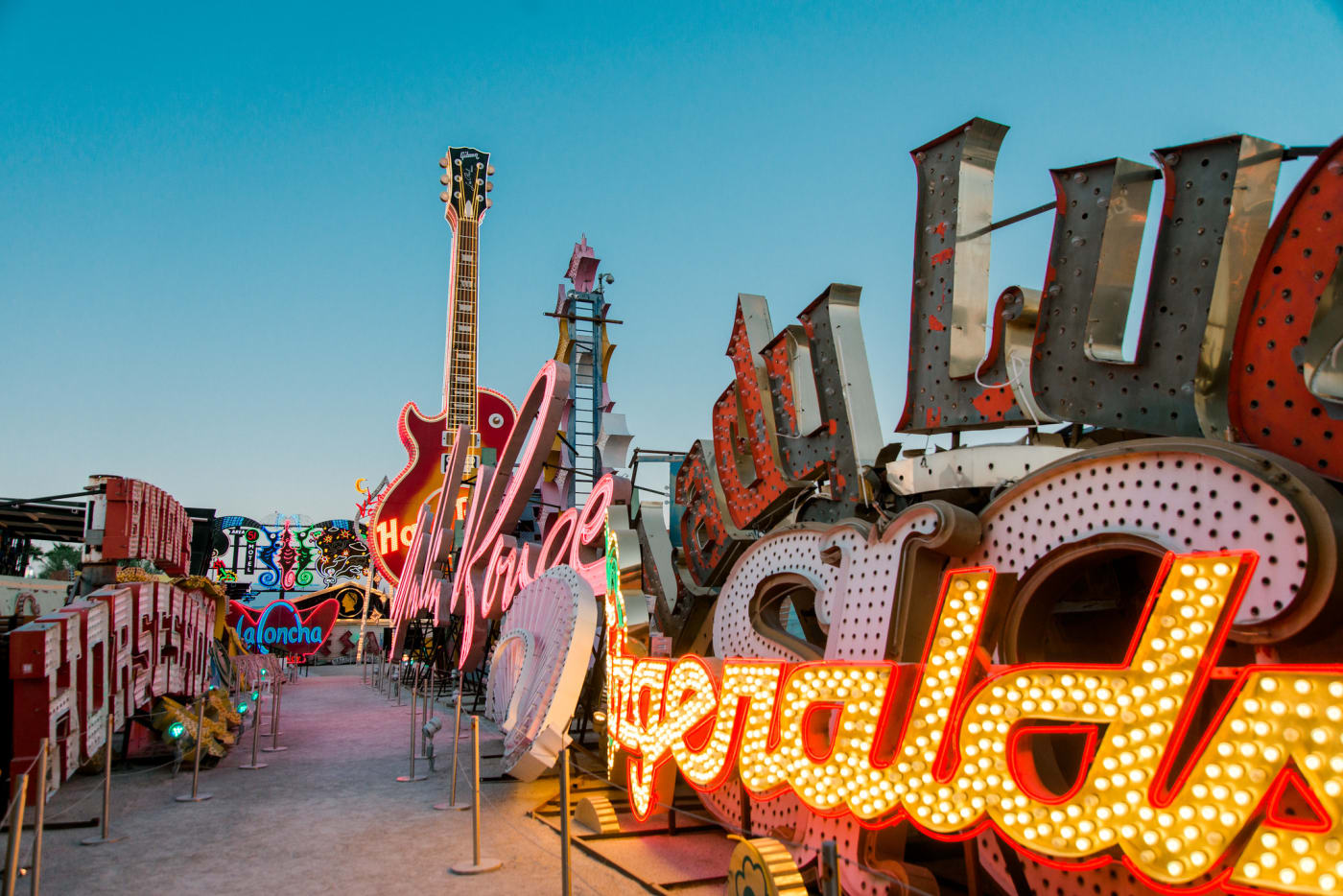Once a desolate stretch of road along Highway 91, the original route from Los Angeles to Las Vegas, “The Strip” is a 4.2-mile (6.8 km) section of Las Vegas Boulevard whose combined casinos, resorts, restaurants, hotels and hot spots give off a collective glow so bright it can be seen from outer space.

Sahara (1952-2011) SLS (2014-2019) Sahara Las Vegas (2019-Present)
Sahara, c. 1952-1953. Las Vegas News Bureau
The Sahara opened in 1952 with 240 rooms housed in four modest two-story buildings situated around an Olympic sized swimming pool. The hotel and casino featured an African desert-Moroccan styled theme with camel statues and oasis scenes painted onto interior murals, it was nicknamed the “Jewel of the Desert.”
The Sahara is particularly remembered for its lounge shows, with many famous stars performing in their famed “Congo Room.” Early headliners included Louis Prima and Keely Smith. The Beatles stayed at the Sahara when they played Las Vegas’ convention center in 1964 and had slot machines brought to their room instead of visiting casinos to protect themselves from excitable fans of the “Fab Four.”
Sahara closed in 2011 and the SLS opened in its place in 2014. The name was changed back to Sahara in 2019. The large Sahara sign on display in the Boneyard is from the 1990s and would have been installed over the porte cochère (automobile entrance) along Paradise Ave. Other letters from the Sahara can be found throughout the collection.

Part of the Anthony Bondi Collection, 2015
La Concha Motel, 1980. Las Vegas News Bureau


Photographed as part of the UNLV Special Collections and Archives
